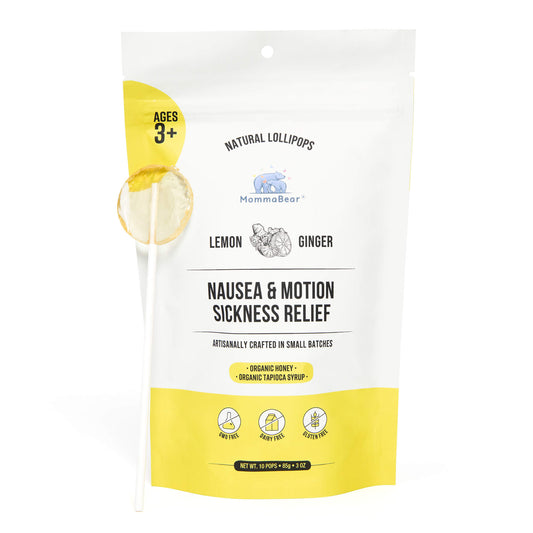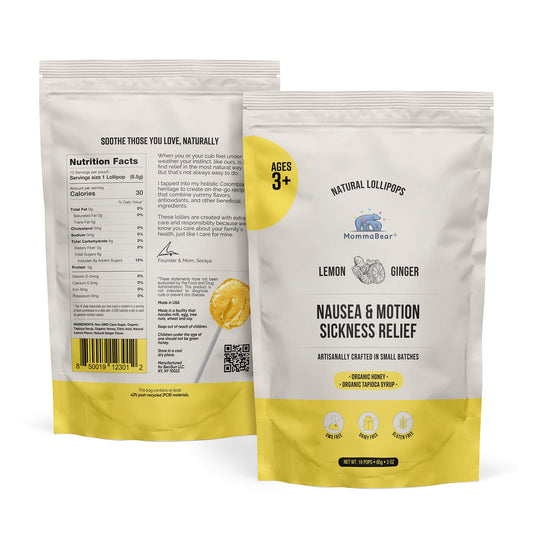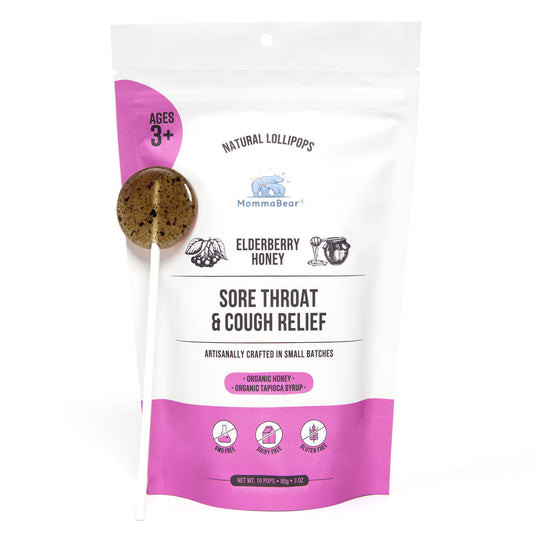When it comes to flying, the experience is not always smooth sailing for everyone. The concept of boarding an airplane can be an exceptionally nerve-wracking ordeal for some, causing physical symptoms like nausea and psychological distress like anxiety or even panic attacks. This debilitating fear of flying is clinically known as "aerophobia." For those who suffer from this condition, stepping into an airplane can feel like stepping into a pit of despair. The purpose of this article is to delve deep into everything related to aerophobia from its definition to its root causes and organic solutions brought to you by MommaBear Organics. We aim to cover these topics comprehensively to serve as a valuable resource for understanding and combating aerophobia.
What is Aerophobia?
Aerophobia is an acute or chronic condition manifesting as an intense, irrational fear of flying. The term "aerophobia" originates from the Greek words "aero," meaning air, and "phobia," denoting fear. This affliction can severely limit one's ability to travel for work, leisure, or to visit family and friends, making it more than just an inconvenience—it's a debilitating issue that requires attention. The impact of this phobia can extend to other aspects of life, resulting in a decreased quality of life.

Aerophobia, while commonly observed, doesn't usually point to a single, definitive cause. Contrary to what some may believe, it is infrequent for this particular phobia to arise from a traumatic flight experience. However, specific triggers have been identified that can ignite or exacerbate the condition:
- Media reports featuring stories about terrorism, crashes, or acts of violence aboard airplanes.
- The phases of take-off and landing.
- Worries about the potential spread of fire or illness within the confined space of the airplane.
- Experiencing turbulence, or unexpected bumps and jolts, during the flight.
Media Influence: Terrorism, Crashes, and Violence on Airplanes
In today's age of information overload, news stories have an outsized impact on our psyches. Constant exposure to news about terrorism, airplane crashes, or violent incidents in flight can instill a deep-seated fear of flying in people, even if they have never personally experienced any of these situations. The media's emphasis on such incidents, although rare, can heighten the sense of risk associated with air travel, amplifying pre-existing fears.
Take-off and Landing: The Physiological Toll
For many individuals, the specific moments of take-off and landing are significant triggers for aerophobia. These are the instances when the airplane undergoes the most noticeable changes in speed and altitude, and the physical sensations associated with these transitions—such as the feeling of being pushed back into the seat or changes in ear pressure—can induce acute anxiety. The awareness that these are critical phases of the flight often magnifies the fear.
Contemplating In-Flight Catastrophes: Fire or Illness
The confined nature of an airplane cabin can give rise to thoughts about potential in-flight disasters like fire or the spread of illness. Since passengers are in a sealed environment with no immediate exit options, even the remote possibility of such occurrences can fuel the phobia. This fear is often exacerbated by announcements or instructions about emergency procedures, which, while intended to reassure, can instead induce further anxiety.
Turbulence: The Unpredictable Foe
Turbulence is perhaps one of the most commonly cited triggers for aerophobia. The sudden and often unexpected jolts that occur during flight can send a wave of panic through an individual already dealing with an irrational fear of flying. Although turbulence is generally harmless and is a routine part of air travel, for someone suffering from aerophobia, it embodies the unpredictability and lack of control that characterizes their fear.

Symptoms of Aerophobia
Understanding the symptoms of aerophobia is crucial, not only for those who suffer from it but also for the broader public, who may interact with afflicted individuals in various capacities—be it as family members, colleagues, or even fellow passengers on a flight. This phobia has far-reaching effects, impacting not just an individual's ability to travel but also their overall quality of life and mental health.
Avoidance and Obsession: Nervous place for someone with aerophobia
One of the most noticeable manifestations of aerophobia is the avoidance behavior it triggers. People with this condition often go to great lengths to avoid flying, even if it means sacrificing family vacations or refusing to travel for work. This avoidance extends to selecting alternate, less convenient modes of transportation like cars, buses, or trains to bypass air travel. It's not just the act of flying that induces fear; even ancillary elements related to aviation, such as movies, books, or news stories about air travel, can be meticulously avoided. The flight itself becomes a nervous place for someone with aerophobia.
On the flip side, some individuals may become overly obsessed with understanding the security protocols in airports and on airplanes as a means of mitigating their fears, although this rarely offers lasting relief.
Physical and Psychological Symptoms: From Panic Attacks to Indigestion
It's not uncommon for individuals suffering from aerophobia to experience panic attacks either before boarding a plane or during a flight. These episodes can manifest through a range of severe physical and psychological symptoms, each of which can be crippling in its own right:
- Chills: A sudden feeling of cold, often accompanied by shivering, which may be uncontrollable.
- Dizziness and Lightheadedness: A disorienting sensation where one might feel as if the room or environment is spinning around them.
- Hyperhidrosis (Excessive Sweating): An abnormal amount of sweat far exceeding the body's need to cool itself.
- Heart Palpitations: A noticeably rapid, strong, or irregular heartbeat that creates a conscious awareness of one's heart pounding in the chest.
- Nausea: A feeling of unease and discomfort in the stomach, often accompanied by an urge to vomit.
- Dyspnea (Shortness of Breath): A tightness in the chest and difficulty in breathing, which might escalate to hyperventilation in extreme cases.
- Trembling or Shaking: Involuntary, spasmodic muscle contractions that may affect the hands, legs, or the entire body.
- Dyspepsia (Upset Stomach or Indigestion): A general discomfort or pain in the upper abdomen, often accompanied by belching, bloating, or nausea.
Understanding these symptoms in their entirety is pivotal in devising effective treatment and management strategies. Whether through medical intervention, cognitive-behavioral therapy, or holistic solutions like nausea lollipops, addressing the symptoms is the first step in reclaiming the skies and, by extension, one's freedom.
Aerophobia Study by the Cleveland Clinic
The Cleveland Clinic, one of the most respected medical institutions in the United States, has conducted significant research into aerophobia, providing valuable insights into the condition. According to their findings, aerophobia is more common than initially thought. The research suggests that approximately 25 million adults in the U.S. are affected by this debilitating fear of flying.
The Cleveland Clinic's study goes on to reveal that aerophobia is particularly prevalent among individuals aged 17 to 34. This age group finds itself at the peak of their professional and personal lives, often requiring frequent travel for work or leisure. The impact of aerophobia in these formative years can be especially devastating, affecting career opportunities, relationships, and overall quality of life.
These statistics are not just numbers; they reflect the widespread reality of this condition, highlighting the need for more effective treatments and coping mechanisms. It becomes increasingly essential to explore various treatment options, including pharmacological, psychological, and natural avenues like the organic lollipops offered by MommaBear Organics. The clinic's emphasis on cognitive-behavioral therapy (CBT) as a leading treatment also underscores the multi-dimensional nature of aerophobia, affirming that a combination of approaches may offer the most robust remedy for affected individuals.

Harnessing the Power of Organic Lollipops from MommaBear Organics
The journey to managing and mitigating the symptoms of aerophobia is often multifaceted, requiring an integrated approach that blends medical, psychological, and holistic remedies. Within this framework, one product stands out for its innovative, natural, and convenient solution: nausea lollipops from MommaBear Organics.
Testimonials and Reviews
Numerous clients have reported experiencing significant relief from aerophobia symptoms after using these lollipops. The reviews speak to the efficacy and convenience of the product.
One of our clients recently shared a compelling experience while navigating the challenges of aerophobia. She was en route back to Nevada when the fear of flying reached a peak intensity. Symptoms began manifesting in various forms—palpitations were rampant, nausea kicked in, and anxiety levels soared. The confined space of the airplane cabin, the unsettling vibrations, and the roar of the engines only intensified the emotional turmoil.
Our client decided to try a lemon lollipop, which she had brought along for the journey. As she savored the organic lollipop, she experienced a surprising but welcomed change—the pounding heart began to steady, the nauseous feeling started to subside, and a calming sensation washed over her. The rest of the flight turned out to be notably more manageable, all thanks to the natural ingredients in the aerophobia lollipop designed to soothe and comfort. This experience not only transformed her flight but also instilled a newfound confidence to face aerophobia head-on in future travels.

Reclaim Your Skies: Shop Our Nausea Lollipops to Ease from Aerophobia
In conclusion, aerophobia is a complex condition with multifaceted symptoms and triggers. While the journey to managing this fear often involves a combination of medical, psychological, and even alternative therapies, one promising avenue of relief comes in a small, delicious, and portable form: MommaBear Organics nausea lollipops.
Designed to alleviate symptoms like nausea and anxiety, these lollipops are crafted with quality, organic ingredients and also embody the family-centric, holistic philosophy of a women-led company. Artisanally crafted in the United States, they bring together the benefits of natural ingredients and functional antioxidants in a convenient, easy-to-carry format that meets the demands of modern life and the particular challenges of aerophobia.
As countless testimonials and reviews attest, our healthy lollipops have been a game-changer for many suffering from aerophobia. Their potent blend of comfort and efficacy makes them an ideal companion for air travel or any situation where aerophobia symptoms might strike.
Visit MommaBear Organics to shop our range of organic lollipops today and take the first step in conquering your skyward fears. Your journey towards a more comfortable and enjoyable flying experience starts here. ✈️🍭
Disclaimer: The article is for informational purposes only and should not be construed as medical advice. Always consult a healthcare provider for personalized medical advice.








